Semi trucks are heavy. These behemoths of the road require that weight to safely haul their heavy loads across the country. However, it would all be for nothing if semi trucks did not ride on top of equally heavy tires.
Most semi truck tires weigh around 120 pounds but can weigh more or less depending on tire type, size, and load limits. For instance, heavy-duty semi truck tires often weigh in around 250 pounds, not including their rims. Commercial tire rims can add up to 50 pounds of extra weight.
However, tires lose weight as normal wear and tear reduce their tread depth. This lost weight can cause an issue down the road if not detected and repaired in time. By reading further, you will learn how to check tire tread wear so you can replace your tires as needed.
Built to handle harsh road conditions and heavy cargo, semi trucks have hefty tires that match their durability in weight and size. These massive tires clock in at over 120 pounds, not including their rims, easily outweighing the tires found on other vehicles.
For comparison, here are some weights for some common tire types on the road:
Much of the extra heft in semi truck tires comes from their material construction. These materials come in various forms of thick slabs of solid vulcanized rubber arranged in a radial pattern. This makes the tires extremely durable and structurally sound while driving on and off-road.
Because of this construction, semi-tires can vary in weight depending on their purpose. For instance, trucks used in agriculture, mining, or pulling large equipment can have tires that weigh up to 250 pounds.
Like cars, semi trucks and trailers require tire maintenance to ensure safe driving conditions and lower repair costs. This is because the tires are an essential part of the rig and the easiest to break, but it goes beyond that. Worn-out tires may not have the weight or air pressure to safely haul your load down the road.
This is because the tires are an essential part of the rig and the easiest to break, but it goes beyond that. Worn-out tires may not have the weight or air pressure to safely haul your load down the road.
Proper semi-tire maintenance can improve your truck’s:
While the benefits of maintaining the tires on your semi truck are clear, many drivers and fleet managers find the task overwhelming. Fortunately, the tires are easy to check and maintain.
Semi tire maintenance goes beyond quickly checking the tires before you head out on the road. You must ensure your tires comply with all federal and state tire regulations. Luckily, most of these regulations fall under a single document: the Code of Federal Regulations (CFR). The CFR provides tolerances for tread and groove depth, air pressure, and tire condition.
The depths of the tire treads directly correlate to the weight of the tire. This is because the treads are the bulk of the tire’s rubber. As such, you want to maintain the quality of the treads and grooves as much as possible.
The CFR directs you to check the depth at a “major tread groove,” but any tread in the middle of the tire should work. You want to make sure that the tread depth for all of your tires is around 2/32 inches per the CFR.
If you find your tires are getting bare, you can have them retreaded to regain their traction and weight. The process reforms the treads using recycled rubber until the tires regain their original thickness. Retreading is cheaper than buying new tires and is better for the environment.
The process reforms the treads using recycled rubber until the tires regain their original thickness. Retreading is cheaper than buying new tires and is better for the environment.
While some semi-tires are durable enough to run flat, you never want to keep them that way. It ruins the tread and your rims, depressing your truck’s performance and safety. It may also violate CFR tire regulations. Therefore, you want to maintain the air pressure in your tires for as long as possible.
Testing semi truck tire pressure is similar to testing the pressure on any other vehicle. The inflation should be enough to carry the weight of your truck and your cargo.
A lot is riding on your tires, and not just your cargo. Because of this, semi truck tires are among the heaviest tires on the market, weighing in at least 120 pounds and above. While the weight can differ between style and purpose, maintaining this weight is required for the safe operation of your truck.
Semi-trucks undoubtedly make their mark on the road. Whether they're hauling goods or just taking a break, these trucks can traverse their way over rugged terrain and enormous obstacles. They're indispensable to the economy and help keep America moving.
But have you ever wondered how much a semi-truck weighs? Well, chances are you probably have. And the good news is, you found this article, which will help you learn how much a semi-truck weighs.
How Much Does a Semi Truck Weigh?There are two ways to determine the weight of a semi-truck. They are laden and unladen.
Laden weight involves measuring the weight of the truck when it is fully loaded.
The unladen weight, on the other hand, entails measuring the weight of the truck and trailer.
The laden weight of a semi-truck will depend on the load. For instance, a truck full of empty barrels will weigh less than one carrying fully loaded barrels. The gross vehicle weight rating (GVWR) of semi-trucks represents the maximum weight they can carry.
The gross vehicle weight rating (GVWR) of semi-trucks represents the maximum weight they can carry.
A truck's gross vehicle weight rating (GWR) includes the weight of the truck, its cargo, its fuel, passengers, and any other equipment attached to the truck. According to US federal law, semi-trucks may be loaded to a maximum of 80,000 pounds. Although some heavy-duty trucks have a higher GVWR for safety, it is still illegal to load them over 80,000 pounds.
Due to factors like the engine power, how much it can tow, and whether it's a sleeper cab, the unladen weight of a semi-tractor can vary between 10,000 and 25,000 pounds. An empty 53-foot trailer weighs about 10,000 pounds, making it about 35,000 pounds unloaded.
In a nutshell, semi-truck that are unattached to a trailer weigh between 10,000 to 25,00 pounds. However, with a trailer hooked to them, they weigh 35,00 pounds.
How Much Does a Semi-Truck Tire Weigh?The tire of a semi-truck plays a critical role in the safety and performance of the vehicle. The tire of a semi-truck weighs 110 pounds. However, this weight depends on factors like the use.
The tire of a semi-truck weighs 110 pounds. However, this weight depends on factors like the use.
For example, a truck for handling mining tasks tends to be more robust and sturdier. As a result, they can manipulate the rough terrain and support their weight with heavier and more robust tires.
Dimension of a Semi-TruckThe size and dimensions of semi-trucks vary, depending on the model and brand. In the United States, semi-trucks typically measure 72 feet long, 13.5 feet tall, and 8.5 feet wide. They can weigh over 80,000 pounds.
Choosing a used semi-truck gives you more options in terms of length, height, width, as well as sleeper cab and day cab sizes.
How Much Does An 18-wheeler Weigh?An 18-wheeler consists of a tractor and trailer. In other words, it's a semi-truck with a trailer attached to it. In total, there are 18 wheels. Therefore, the empty weight of an 18-wheeler is 35,000 pounds, and the loaded weight cannot exceed 80,000 pounds.
Tractor-trailers typically weigh around 80,000 pounds when fully loaded. If a trailer is empty, it will weigh approximately 35,000.
What is the Stopping Distance of a Semi-Truck?Even though the truck is not loaded, its enormous weight means it will take longer to stop than a regular car.
When a car travels at 65 mph, it can stop entirely in about 300 feet. In contrast, a fully loaded semi-truck can travel up to 600 feet before it stops. Conditions like rain, ice, and snow can further extend this distance.
As a result, you should avoid cutting off a semi-truck in traffic and do not stop in front of them abruptly if you can help it. It may create a dangerous situation that puts your life and the lives of others at risk.
Classification of TrucksThe weight classification of trucks depends on the gross vehicle weight rating (GVWR), which considers the truck's maximum load weight and the amount of fuel, cargo, and passengers it can haul.
Safety is an incredibly crucial consideration when classifying trucks. Commercial designations and vehicle registrations also take safety into account.
Below are the different classes of trucks:
Light trucksThese are non-commercial trucks that are classified 1 to 3. Examples are pickup trucks, SUVs, etc.
Medium trucksMedium trucks typically serve commercial purposes, and they fall under classes 4, 5, and 6.
 School buses also fall into this category.
School buses also fall into this category.These are the big rigs on the road. These are the trucks that fall under classes 7 to 8.
Garbage trucks, sweeper trucks, and city transit buses fall into this category and other furniture trucks.
Semi-trucks under this class include Ford F -750, Peterbilt 220, Peterbilt 337, and GMC C7500.
Cement trucks and dump trucks are examples of class 8 trucks. Additionally, big rigs like Freightliners, Peterbilts, and Kenworths also fall into this category.
The most common class 8 trucks include Kenworths 7600, Kenworths 7500, and Freightliner Cascadia.
We can determine the weight of a semi-truck in several ways, and the maximum legal weight for a fully-loaded semi in the United States is 80,000 pounds. A typical unladen weight will be closer to 35,000 pounds, but the lowest is roughly 25,000 pounds.
This generalization will not cover all cases, but we hope it can help shed some light on these large and powerful vehicles.
- "Ambulance". I'm listening.
In a small ambulance control room, four women answer phone calls: three of them receive incoming calls from the population, and the fourth, the central dispatcher, distributes calls between teams and keeps in touch with them via radio.
We are located at the central ambulance substation on Polevaya Street. I plan to spend one day with the medical team. 43 teams work at the city station, each with two people. Our team number 19. Its specialists Lyudmila Petrovna Chebalkina and Tatyana Mikhailovna Mikhalina have a long experience of working in an ambulance: 22 years and 16 years.
Its specialists Lyudmila Petrovna Chebalkina and Tatyana Mikhailovna Mikhalina have a long experience of working in an ambulance: 22 years and 16 years.
Shift change. 7:30 am. There is little time to inspect the substation. In all offices and corridors of the building there are loudspeakers, probably left over from the 70s. Numbers are announced over the speakers - this is how the dispatcher informs the brigade about the departure.
The ambulance is listening
The 19th ambulance has already prepared for the shift - the suitcase with the necessary medicines is complete (the paramedic already from memory checks the presence and number of ampoules, blood pressure monitor, glucometer, bandages, syringes ...).
The suitcase weighs about six kilograms, it is taken for each trip. Also in the ambulance, the serviceability of the equipment is checked.
Over the past day, the control room received about seven hundred calls.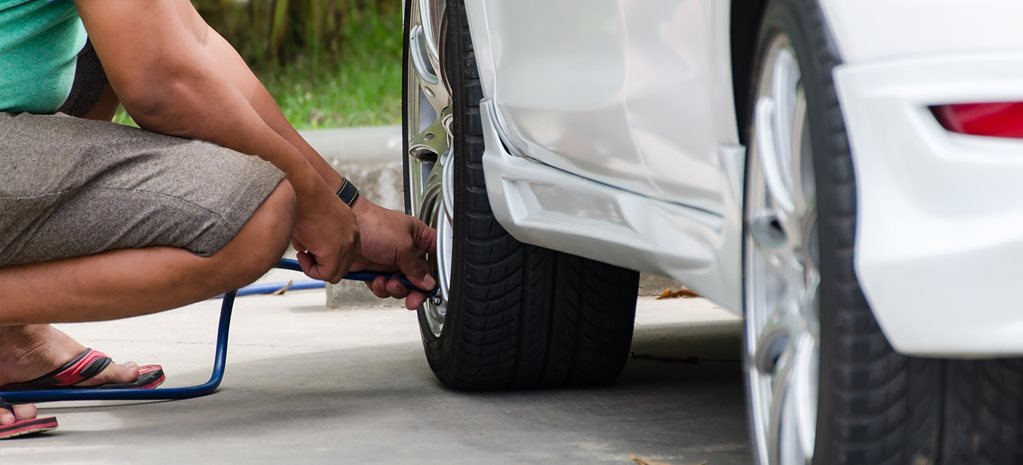 The main flurry of calls falls on the period from 5 pm to 3 am.
The main flurry of calls falls on the period from 5 pm to 3 am.
Brigade numbers are visible in the rectangular window of the duty officers. When the crew is at the station, they are located along the glass. Before each departure, the number is broadcast on the side wall of the window, and the dispatcher also records the information in the computer. In the same window, a call card with the first address is issued.
From the loudspeaker sounds: - 19th on the twentieth machine.
First exit
At 8:05 am. Near the main entrance of the substation, a GAZelle ambulance with identification marks and the number "20" is waiting for us. Behind the wheel, the driver Slava is wearing a baseball cap, a squinted look from under the visor.
- I will climb for a very long time. Can you imagine, I crashed yesterday! Lyudmila Petrovna addresses Slava as she climbs into the cab.
The brigade is given forty-five minutes to provide assistance at one address.
Is this taking into account the road? I ask Lyudmila Petrovna.
— No. Twenty minutes is given to get to the place, - the paramedic answers. - Now you can still meet it, but in the evening there will be traffic jams and it will be more difficult to meet it. First, no one misses. When we turn on special signals, many people pretend not to notice... Each brigade has its own car, and ours got into an accident three days ago! They were just taking a sick person... So the other driver said that he had not seen or heard us! Although everything was ...
People go to a holiday, but we go to war. We have a struggle
We are slowly approaching a traffic light. Congestion ahead.
- Here's a cork for you! And you won't jump over it. Going to work is like going to war! Lyudmila Petrovna says.
- Can't you call yours a holiday? - I turn to her.
— No. Not about ours,” the doctor replies smiling.
The ambulance is warm. Old "loaves" in the car park of the city station were replaced with modern "GAZelles".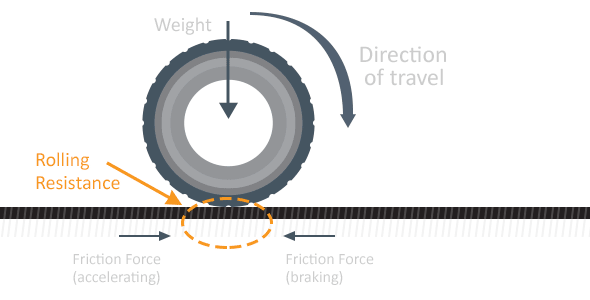 In the cabin there is equipment for transporting patients and providing them with the necessary medical care. But the novelty of machines is not enough for a long time: they are operated around the clock.
In the cabin there is equipment for transporting patients and providing them with the necessary medical care. But the novelty of machines is not enough for a long time: they are operated around the clock.
- Anyway, if we are running out of a big delay on the way, then we have to turn on special signals in order to get there faster. Because the people are already all angry... For them, only their world exists... They don't think about anyone. That other people are going to work, that the roads are uncleaned - they don’t care, - the paramedic says calmly.
The driver does not agree:
- Now at least they have begun to pass more or less, they even try somehow. Before you go forward, and the other sees it, climbed in front of you and went. Now they have a little respect.
Looking for an apartment No. 246
On the way, Lyudmila Petrovna says that only in twenty-five percent of cases do patients need help from an ambulance. In all other situations, you can call a therapist at home or go to the clinic yourself. According to the paramedic, people are afraid for their health, but the responsibility for it is shifted, as they say, from a sick head to a healthy one. Therefore, most often an ambulance is called for reinsurance.
According to the paramedic, people are afraid for their health, but the responsibility for it is shifted, as they say, from a sick head to a healthy one. Therefore, most often an ambulance is called for reinsurance.
Arriving in Gorroscha. In front of us stands an old nine-story gray-brick dormitory with rusty bars on the windows. Two entrances are adjacent to each other in close proximity. Both doors were partially rusted, they were sealed with torn remnants of advertisements.
Among the details that can remind you of the modern improvement of residential buildings are an intercom and a sticker with the inscription “Attention! Video surveillance is underway." Lyudmila Petrovna is dialing the apartment number. There are beeps, and then a quiet answer.
— Did you call an ambulance? the paramedics ask simultaneously
The door opens. We get inside. At the entrance, on the wall on the right, there is an inscription made with a black felt-tip pen: “Dear animals, do not litter in the entrance!”.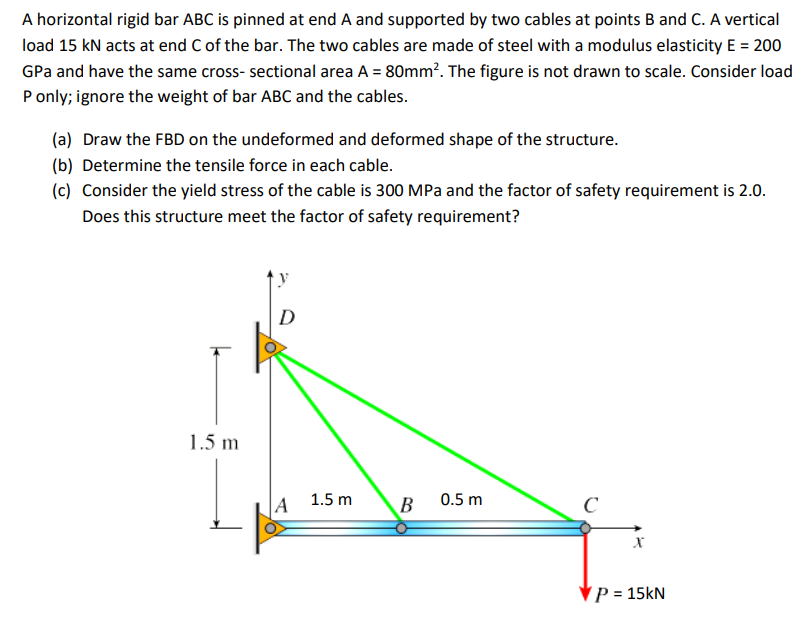 The three of us can hardly fit into the narrow elevator. It has only six buttons on the panel, and nine floors.
The three of us can hardly fit into the narrow elevator. It has only six buttons on the panel, and nine floors.
A middle-aged man is smoking on the landing in an unbuttoned shirt, sweatpants and slates. We ask him where to find apartment 246.
- You need this in the second entrance, - he answers.
“But the intercom worked,” Lyudmila Petrovna is surprised. — It always happens with hostels. There are four buildings on Nakhimov and the apartments are the same everywhere. If there is any mistake, then you can bypass them all in the search.
We go to the second entrance. The door is open. However, the resident of the house who got out of the elevator assures us that we need to return to the first entrance again. Lyudmila Petrovna suggests going outside and calling the dispatcher.
Five minutes later, the girl who called the ambulance leaves the first entrance by herself.
- So what is your apartment number? Lyudmila Petrovna asks her.
- 24 6.
The girl is a vocational school student, she came to Ryazan from the region for a couple of days. There is no insurance on hand. The paramedic says that in the absence of a policy, the brigade still provides assistance, but the state does not compensate for this in any way.
The patient has a fever and cough.
- Why didn't you go home right away when you got sick? In your Chuchkovo? Lyudmila Petrovna turns to her.
— I have a boyfriend in the army…
Before leaving, the senior paramedic gives recommendations on treatment. At the exit, we find that the apartment number is still 745, not 246.
"Geran, 19th"
From the call sign "Geran, 19th" senior paramedic of the 19th ambulance brigade Lyudmila Petrovna informs the dispatcher that she is ready to go to a new address.
The car engine sounds smoothly and quietly, the radio is working in the background. From it come the voices of other brigades.
— When departures are allocated, does the zone you are already in count?
- Not always. It used to be so. Now they can send to Pesochnya and Kanishchevo - we will go everywhere. If, for example, there is a blockage in Pesochnya and there are not enough brigades, then we will go there. And so along the way ... If the patient was taken to Kanishchevo and there was a blockage, then we can work there, in Prioksky, Nedostoevo. Where we just don't go. This was not the case before. It's been like that for the last 3-5 years. Previously, territoriality was respected.
- And now why is it not observed? More calls?
- Yes, because it does not cover in any way.
120 addresses and only four brigades were given for them - naturally, they will not cover all this
- There are more calls, but the number of teams remains the same?
- Yes. You see how the city has grown. Behind the "Ice" in Pesochnya there are houses ... The people are increasing.
After a pause, Lyudmila Petrovna continues:
- In general, I think that there may be enough teams if we strictly fulfill all our addresses, including street, emergency, heart attacks, strokes - everything that requires an ambulance. And everything that is urgent - then it is necessary to establish a polyclinic service. Add them there or allocate cars to them. Somehow you need to fix it. Probably everyone has their own point of view on how to put things in order. It's hard, of course.
We would like an injection
Doctors say that many of those who call an ambulance are hoping for a “magic pill” or “some kind of injection” that can cure immediately. When this does not happen, they are disappointed and often do not accept the doctor's offer to drive to hospital .
On the third floor of an old Khrushchev building, we are met by an obese elderly woman. We go to the apartment. Two old men and a cat live in a small kopeck piece filled with Soviet furniture. Under the muttering of the radio, we go into the living room: an 80-year-old old man in a vest lies on the sofa, he breathes hoarsely and loudly.
Under the muttering of the radio, we go into the living room: an 80-year-old old man in a vest lies on the sofa, he breathes hoarsely and loudly.
“Something like the flu… We both get sick with it,” the woman says to the side. - Temperature. Here, maybe, some kind of injection would be.
“We don’t have any injections,” retorts Lyudmila Petrovna. - What temperature? What day is sick? Did you call the doctor?
—He is always sick. They didn't call. I'm already exhausted. All in Moscow. Lord, I really don't have the strength...
Lyudmila Petrovna listens to the patient.
- He is wheezing all over. Pneumonia. How shall we proceed? Two options: either you call the doctor and he prescribes the treatment. They will come to you and do the procedures at home. Or we’re going to the hospital,” Lyudmila Petrovna addresses her.
What a hospital! I can barely walk myself, I have a second disability group
While the pensioner calls the local therapist, Lyudmila Petrovna continues to insist on hospitalization: the patient has bilateral pneumonia, his condition is serious.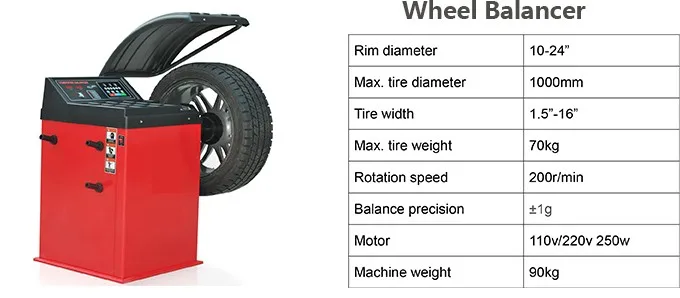 The woman refuses. The pensioner on the phone is replaced by Lyudmila Petrovna. On the tenth attempt, she calls the reception desk: - This is an ambulance. Write down the address...
The woman refuses. The pensioner on the phone is replaced by Lyudmila Petrovna. On the tenth attempt, she calls the reception desk: - This is an ambulance. Write down the address...
At this time, Tatyana Mikhailovna injects the patient with medicine, explains that the used ampoules cannot be thrown away, the therapist must see them. But the woman says otherwise.
— Now the doctors have only one scribble... They usually ask something, but they themselves write and write, there is no time to pay special attention to the patient.
- Well, yes, it's the same everywhere, - answers Lyudmila Petrovna. - At the moment, help has been provided, the doctor has been called, wait. He will come and prescribe treatment. Well, if it gets worse, then call an ambulance. But then you have to go to the hospital.
- And there is no one to go with ...
- Can't you call the children? Since it’s hard for you to walk, Tatyana Mikhailovna asks her grandmother.
- They say let's hire a nurse here, we'll pay her. And I say that the nurse will only interfere with us here.
And I say that the nurse will only interfere with us here.
Saying goodbye to a woman. We return to the car. Sitting down, Lyudmila Petrovna concludes:
This is how it happens, the ambulance is called by elderly people who are destined for themselves and try to survive ...
The driver parked the car in the courtyard of the house. Lyudmila Petrovna fills out the call card: testimony, anamnesis, complaint at the time of the examination. He says that when there are difficult cases, it is better to write everything down at once, then you can forget. Suddenly, a passer-by knocks on the window on the driver's side. By the manner of speech, it seems that the man is in high spirits or slightly tipsy:
— Excuse me, do you have an oxygen bag? — looking into the cockpit, he asks. — Or something lacks oxygen...
Actively gesticulating, the man confesses that he was joking
"Arrhythmia" in Ryazan
It's midday. We are entering Sokolovka. At the turn into the courtyard, we are met by two-story yellow buildings with shabby facades. We drive up to the gray brick dormitory. The smell of dampness hits the nose, the once green-painted walls are covered with mold and "rock art", the brickwork has already been exposed in places, the steps on the stairs have partially collapsed, the floor tiles have survived only in places.
We are entering Sokolovka. At the turn into the courtyard, we are met by two-story yellow buildings with shabby facades. We drive up to the gray brick dormitory. The smell of dampness hits the nose, the once green-painted walls are covered with mold and "rock art", the brickwork has already been exposed in places, the steps on the stairs have partially collapsed, the floor tiles have survived only in places.
The patient is a 39-year-old woman. Her brother leads her to her, lying in a dark room with drawn curtains. The woman has a swollen face, bags under her eyes. The patient says that she works the night shift. After work, the pressure increased, blood came out of the nose and the back of the head ached.
- I have arrhythmia in general.
Lyudmila Petrovna, looking at the medical record:
- You have sinus tachycardia, not arrhythmia. Did you measure pressure? Is there anything to measure? Are you taking any pills? You have it written out here.
— No.
— Why?
A woman complains that she works a lot and has no time to take pills. He says that he is on his legs for fourteen hours, which is why they swell.
— Does your job prevent you from taking pills? How about alcohol? Was there a head injury? Didn't they beat you yesterday?
- Not yesterday. And it was like that before... When I was married, my husband often hit me on the head,” the woman says in a plaintive voice.
After the examination, Tatyana Mikhailovna takes an ECG from the patient.
You need to take care of your health
- Now we will provide assistance, and tomorrow, or when you can, you need to see a doctor. You should start with a therapist, then to an endocrinologist and then to a neurologist. You didn’t go, I think so…” she looks reproachfully at the woman.
“I didn’t go… I took care of my little brother,” the woman begins to cry softly.
Nearby stands a man in his forties.
Is this your brother? Tatyana Mikhailovna nods at him.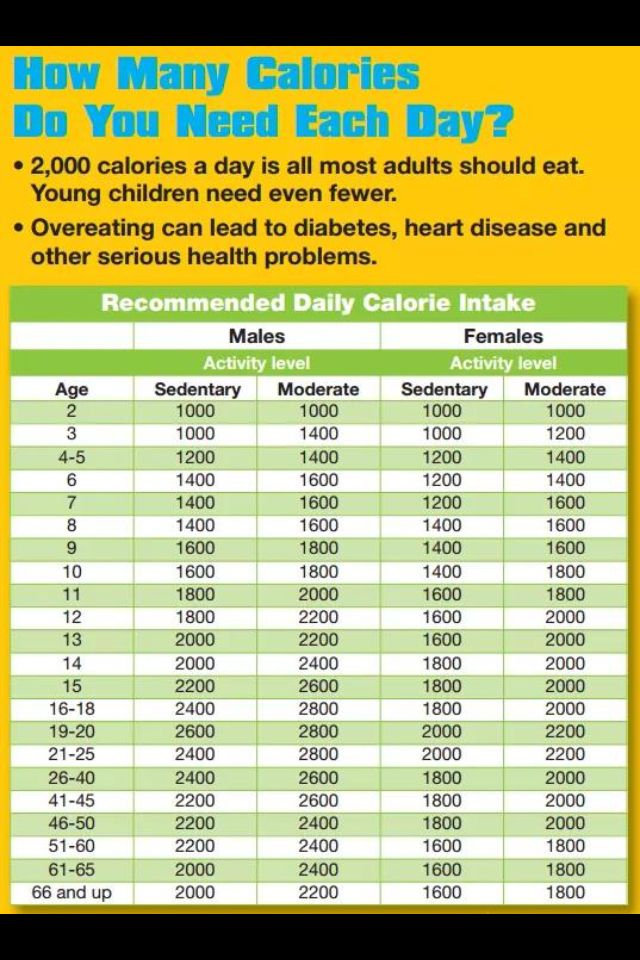 - What are you starting? Is everything okay now?
- What are you starting? Is everything okay now?
The woman nods.
We're leaving. In the car, the senior paramedic sighs
- That's why you called? Definitely yesterday there was alcohol, because it smells of it. Apparently, she drank all night, and now she needs a corroborating document for work.
Who studied what
We are talking about vacation. The senior paramedic assures that everything is bad now:
-- Previously, our parents could go on vacation to the south, but now where can we go on vacation?
- To Solotcha. With a tent, Slava notes with a smile.
- If only with a tent ... In Solotch a ticket to a sanatorium costs twenty-five thousand - this is almost my entire salary. It turns out that he rested for seven days, and then you can "teeth on the shelf."
— Well, they gave you more… Doctors got more… — the driver continues.
— What did they add there?! Lyudmila Petrovna is indignant.
- One has a salary of twelve thousand, and the other has two hundred - that's the average for Russia, - Tatyana Mikhailovna's voice sounds from the salon. “The whole of Russia lives like this here, not just doctors.
“The whole of Russia lives like this here, not just doctors.
— And they also say: who studied what, — the senior paramedic continues with a smile. “But I also didn’t go to gnaw seeds. I studied! "Gnawed" the granite of science. It's not just like that!
We are approaching the Solotchinskoye Highway, where a patient with a leg injury is waiting for us. There is already the eighth address on the account. The conversation about salaries is gradually fading away.
An ambulance like a taxi
We are standing at the entrance of a new building on Solotchinskoye Highway. The yard is a private area, fenced. A barrier works at the entrance - one of the troubles for ambulances, after uncleared yards. According to the rules, an ambulance should drive right up to the entrance in case of emergency situations when transportation of the patient or additional equipment is required. Barriers, as well as improperly parked cars, serve as an obstacle in such situations.
Meanwhile, beeps come from the intercom, and then a woman's voice.
- Did you call an ambulance? Which floor? the paramedic asks.
- Yes. Fourth. Don't get up, I'll go down myself now.
Paramedics, looking at each other, are perplexed. A girl with a pram is walking nearby and offers us to open the door to the entrance. Lyudmila Petrovna thanks:
- The patient said she would come down herself.
— How so? - now the girl is perplexed.
“Like this,” the paramedic throws up his hands.
— Strange... Recently, we also called an ambulance with a baby. The child had a terrible swelling of the larynx, we almost lost him. You can’t even imagine what I went through,” the girl shares. - They came to us only when we had already asked for resuscitation.
Devoting yourself to work, you don’t have time to get to yours
“Our doctor lost his child like that,” says Tatyana Mikhailovna.
At the moment of the conversation, a woman comes out of the entrance, greets us and walks towards the ambulance with almost a brisk step. Next to her, limping, is Lyudmila Petrovna, who had slipped twice the day before on her way to work. Behind them, Tatyana Mikhailovna and I are walking and giggling softly: "The lame one leads the healthy one." We get into the car and go to the tram station.
Next to her, limping, is Lyudmila Petrovna, who had slipped twice the day before on her way to work. Behind them, Tatyana Mikhailovna and I are walking and giggling softly: "The lame one leads the healthy one." We get into the car and go to the tram station.
- Did you order a taxi? the driver smiles at us and starts the car.
“They will do something wrong to me”
A new address is received from the dispatcher. The patient complains of cough and difficulty breathing. During the period of exacerbation of colds, the number of such calls increases. An elderly woman is waiting for us in a five-story building in Gorroscha.
“I am a nurse myself,” she says in a hoarse voice, looking at the doctors.
We go into the room. In a small room there is a bed, a wardrobe and a dressing table. The main feature of the room is the icons. They hang on the wall, stand on the windowsill, on the closet shelves, the largest one is near the bed. From the conversation between Lyudmila Petrovna and the woman, it becomes clear that she does not trust the competence of the local therapist and prescribes all the treatment herself.
From the conversation between Lyudmila Petrovna and the woman, it becomes clear that she does not trust the competence of the local therapist and prescribes all the treatment herself.
I have allergies. For all
After the examination, the senior paramedic offers the patient to go to the hospital. What gets rejected.
- No, I won't go. There, you understand, they will do something wrong to me. Here I know what I'm doing.
— Have you contacted your therapist? You should be seen by a primary care physician.
- Everything after the institute is a complete zero ... Let's consult what I should do.
- You see, you have already drunk strong antibiotics, mixed them into porridge ... In a good way, you need to “obey” for two days, and then take an x-ray. For your peace of mind.
Despite all persuasion, the woman refuses to go to the clinic and signs a waiver of hospitalization.
An ax or a pistol
After the next transfer of the patient to the emergency room, Lyudmila Petrovna is immersed in memories.
At the end of the 90s, she was in her fourth year of work in the ambulance team. At one of the addresses where the paramedic arrived with two colleagues, they were met by a woman who immediately seemed strange to Lyudmila Petrovna. She was wearing a dress, a sundress over it, then a dressing gown and a jacket. To the doctor's question - what happened - the woman answered drawlingly: "oh, don't even ask, we have such problems ...". Then the hostess pointed the brigade to one of the rooms and asked them to enter.
- We go there, and she is somehow shabby, tattered. A black cloth is stretched across the entire room, and a bald, half-naked man is sitting in the middle of the room. There is a heater near the peasant, and an ax lies in front of him.
Lyudmila Petrovna recalls that at that moment all three rushed in all directions.
The man turned out to be mentally ill. The psychiatric team that arrived at the scene told about this. The police soon showed up. When trying to detain the man and take him for treatment, he resisted both services.
When trying to detain the man and take him for treatment, he resisted both services.
After that I came home and thought that I would quit my job
— I remember they take him out, and he is half-naked… All of his legs are in tattoos. His underpants, like an Indian's, are in the form of a rag.
The work of an ambulance is not only a great responsibility for saving other people's lives, but also putting one's own at risk. In March 2015, a drunken patient attacked an ambulance. Medics came to call a woman who complained of a high temperature. However, the temperature was not so high that it had to be "knocked down". Then the drunken husband of the woman began to demand codeine-containing drugs from the health workers. He was, of course, denied0003
- He said he was taking us hostage. The second paramedic picked up the phone and said - now I will at least call the dispatcher and say that we are being taken hostage. At first, we accepted it with a smile, thought that he was fooling around.
After that, the man closed the front door and went into the next room, from which he returned with a gun and shot at the doctors. The bullet flew a few centimeters from the people.
- My colleague is a strong-willed person, and I look at her, tears rolled down from her eyes. We immediately kicked his suitcase and pushed him.
The man searched the bag, but did not find drugs containing drugs, after which he released the doctors.
— Ten minutes before, I was talking to a child on the phone. And after all this, she could simply not come home...
Immediately after the release, the paramedics turned to the police. The man was detained.
“I'm not going anywhere. I will die”
Some patients find listeners in the face of medical workers for whom the question “I am sick, what are you complaining about?” serves as an occasion to share not only the history of the disease, but also one's sometimes difficult fate. Doctors treat such people with understanding; such conversations are not uncommon for them.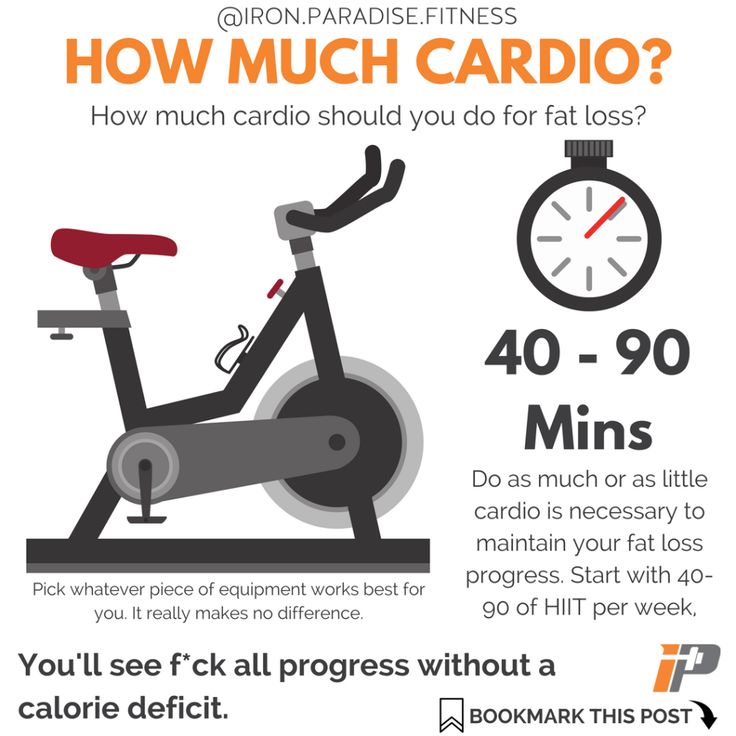 For one day of work side by side with the ambulance team, you are convinced of this personally. Each "address" is a separate story, in which it is sometimes not clear why a person suffers more - from a physical illness or from mental torment.
For one day of work side by side with the ambulance team, you are convinced of this personally. Each "address" is a separate story, in which it is sometimes not clear why a person suffers more - from a physical illness or from mental torment.
Late in the evening at one of the addresses, an 85-year-old grandmother, who is called "God's dandelion", was waiting for the ambulance. An elderly woman complained of chest pains. The day before, she came from the village to visit her granddaughter, who suffers from cerebral palsy.
Lyudmila Petrovna first examines the pensioner, at this time Tatyana Mikhailovna fills out the call card. Upon examination, the grandmother says that she comes to Ryazan once a week to visit her granddaughter and wash in the bathroom, because there are no such amenities in the village.
“I have four goats,” she says, “I need to sell them.
My grandmother has a farm in the village: goats, chickens
“She’s all alone there,” explains the granddaughter, who is sitting on a chair nearby.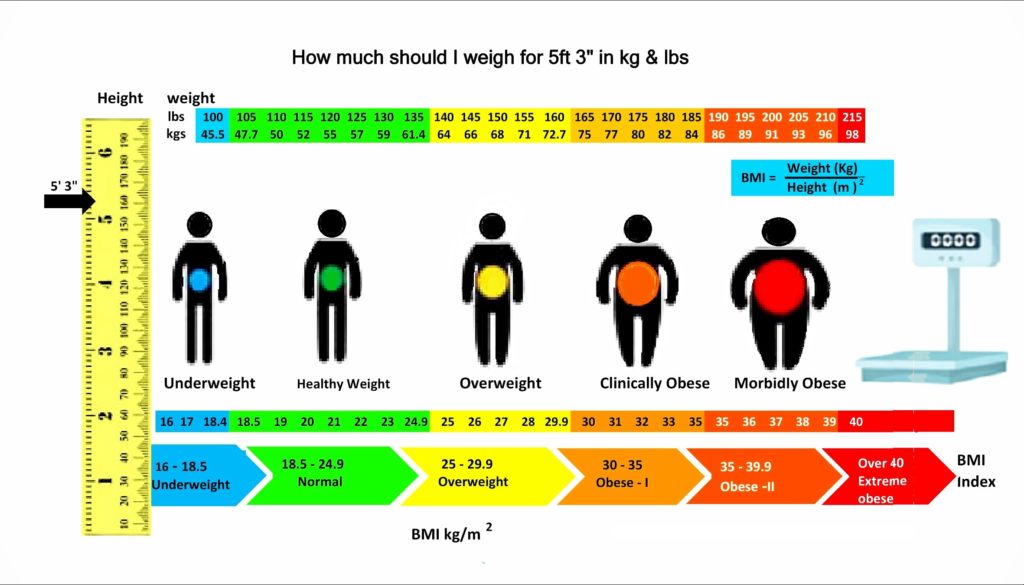
In a tiny one-room apartment, a girl huddles with a dozen cats, which now and then snoop around the room. Some of them peek out from under the sofa with a fright, on which a miniature grandmother is sitting.
Lyudmila Petrovna reads a cardiogram just taken. The readings turn out to be worse than the previous ones that were preserved in the medical record.
- Have you had a heart attack for a long time? the doctor asks.
— Twenty years ago. I then worked in the Ministry of Internal Affairs,” the pensioner replies. — There I had two heart attacks in one year. After a short pause, she continues: - I live alone. You see, I just have to come to her, - the woman nods at her granddaughter. Then, turning to the paramedic: - I have my own apartment. But they don't want to see me there.
- Does your heart hurt now? Ludmila Petrovna interrupts her.
I'm already used to this pain l
- I drink handfuls of pills. It’s time for me to die…” my grandmother says, looking at Tatyana Mikhailovna and me.
- Well, how! You have such a household, and you are going to die, - Tatyana Mikhailovna encourages her.
- Yes, I will die soon. Where else to live? 85 years already.
- Shall we go to the hospital? the senior paramedic interrupts the pensioner again.
- I'm not going anywhere. I will die.
However, the doctors managed to persuade the patient.
“You got me sick!”
With a similar phrase, only in obscene form, the ambulance team is greeted by the doctor on duty at the emergency room of the city hospital where grandmother was brought. The clock on the wall shows 22:15. At this time, three people are waiting in the darkness of the corridor of the admissions department.
- There are no forces on you! - comes from the duty officer's office. The doctor, a young woman with a sleepy face, throws the paper handed out by the senior paramedic onto the table. From the conversation, it becomes clear that she is not very happy about the arrival of the ambulance.
— And where do you suggest we take them? You don't shout too much here.
- I don't scream. You’re just completely already…” noticing a reporter with a camera, the woman changes her tone to a calm one. - We are tired.
— Aren't we tired?! the paramedic responds.
Ten minutes later we return to the ambulance.
— Who wants to go back to the hospital after such a doctor meets you? Lyudmila Petrovna is indignant. - Nobody!
Less than a day, 19The brigade visited sixteen addresses. All the calls turned out to be routine, there were no emergencies. But the fatigue of doctors is visible. There are fewer conversations, and in a sudden silence, at about one in the morning, Lyudmila Petrovna calls the dispatcher:
- Geran, 19th. Can I go back to refuel?
- Come back, 19th.
EKATERINA
SYSOEVA
Ekaterina has a brilliant education behind her shoulders and fifteen years of versatile teaching experience in yoga, fitness and oriental dance. This is the most experienced instructor of our studio. Ekaterina's specialization:
This is the most experienced instructor of our studio. Ekaterina's specialization:
— yoga for women
— yoga for the spine
— fitness yoga...
read more
OLGA
LAVROV teaching experience. Olga specializes in yoga for solving spinal problems. If you have a hernia, curvature, back pain - you are here). Olga has been practicing yoga since 2006. She studied at the Shaivite School of Yoga in St. Petersburg under the guidance of V.P. Medvedev...
read more
ANNA
NEKHOROSHEVA
This is a young charismatic girl with a magical voice that will immerse you into light and peace. Passed full-time training: School of the Yoga Federation of Russia. The first educational organization in the country whose programs have been certified by the YTTC-100/200/300/500 standard (Yoga Teacher Training Course. ..
..
read more
MAXIM
KALASHNIKOV
Instructor with ten years of practical experience. Came to yoga for healing back, practice helped almost immediately. Over time, I realized that yoga is much deeper than just physical improvement and began to independently study the classic books and Eastern philosophy...
read more
SVETLANA
NEMEROVA
Has been practicing Iyengar yoga for over 10 years, since 2007. He has a higher education in psychology with the right to teach. Find an approach to any student, regardless of his level of training or mood). In 2017, Svetlana completed a three-year course with one of the best teachers SPb...
read more with a brilliant education. Marina has 10 years of experience in yoga, 8 of which she has been teaching. Marina started her yoga journey in the Iyengar tradition. Trained in the program "Methodology and yoga practice" under the guidance of Alexander Furashov...
Marina started her yoga journey in the Iyengar tradition. Trained in the program "Methodology and yoga practice" under the guidance of Alexander Furashov...
read more
MILA
KISELYOVA
Certified yoga instructor. She studied at the Wings of Perfection Yoga School under the guidance of Georgy Leonidovich Bogoslovsky.
read more
MARINA
LAVROV
Certified yoga instructor. Completed full-time training at the School of Yoga "Patanjali". Received an international certificate from Yoga Alliance International as an instructor in Hatha yoga.
read more
ANNA
ZAKHAROVA
Fitness trainer with higher sports education and 15 years of experience work. Anna graduated with honors from the National State University of Physical Culture, sports and health. P. F. Lesgaft, Faculty of AFC and Rehabilitation.
P. F. Lesgaft, Faculty of AFC and Rehabilitation.
read more
MARIA
KOLESNIKOVA
Certified Hatha Yoga Instructor with higher education in psychology. Maria graduated from the Hatha Yoga Instructor course with the famous yoga therapist Artem Frolov ("Institute of Oriental Methods of Rehabilitation").
read more
EKATERINA
GOLOVNOVA
Certified Hatha Yoga instructor. Catherine began her journey in yoga in 2009 At the beginning of 2018, she completed instructor courses at GY School...
read more
SVETLANA
KULIKOVA
Attentive adult instructor. I started yoga in 2008. Most of all, Svetlana was attracted by the fact that after class she felt happy...
read more
IRINA
MOROZOVA
Certified Aerial Yoga Instructor with higher sports education.